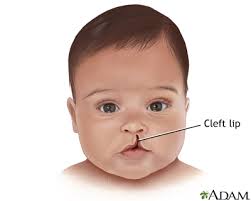cleft
英 [kleft]
美 [kleft]
- adj. 分裂的;劈开的
- n. 裂缝;龟裂
- v. 劈开;分开(cleave的过去式和过去分词)
- n. (Cleft)人名;(英)克莱夫特

记忆方法
将“cleft”与“裂开”的动作联系起来。想象一个“c”代表开裂的边缘,就像在物体表面划出一道裂缝,然后是“left”作为动词的后缀,表示这个动作留下的结果,即一个裂缝。通过这种视觉联想,可以帮助记忆“cleft”意为裂缝或劈开的状态。
以上内容由AI生成, 仅供参考和借鉴
中文词源
cleft 裂缝
来自cleave,劈开。
英语词源
- cleft (n.)
- 1570s, alteration (by influence of cleft, new weak past participle of cleave (v.1)), of Middle English clift (early 14c.), from Old English geclyft (adj.) "split, cloven," from Proto-Germanic *kluftis (cognates: Old High German and German kluft, Danish kløft "cleft"), from PIE *gleubh- (see glyph). In Middle English anatomy, it meant "the parting of the thighs" (early 14c.).
- cleft (adj.)
- late 14c., past participle adjective from cleave (v.1)). Cleft palate attested from 1828.
权威例句
- 1. a cleft in the rocks
- 岩石的裂缝
- 2. Their baby had an operation to repair a cleft palate.
- 他们的宝宝接受了兔唇整形手术.
- 3. The climber fell down a cleft in the rocks.
- 爬山者跌入岩石的裂缝里。
- 4. I hid the message in a cleft in the rock.
- 我把情报藏在石块的裂缝里.
- 5. The ice cracked and he slumped into the cleft.
- 冰裂开,他(噗通)掉入裂缝中.